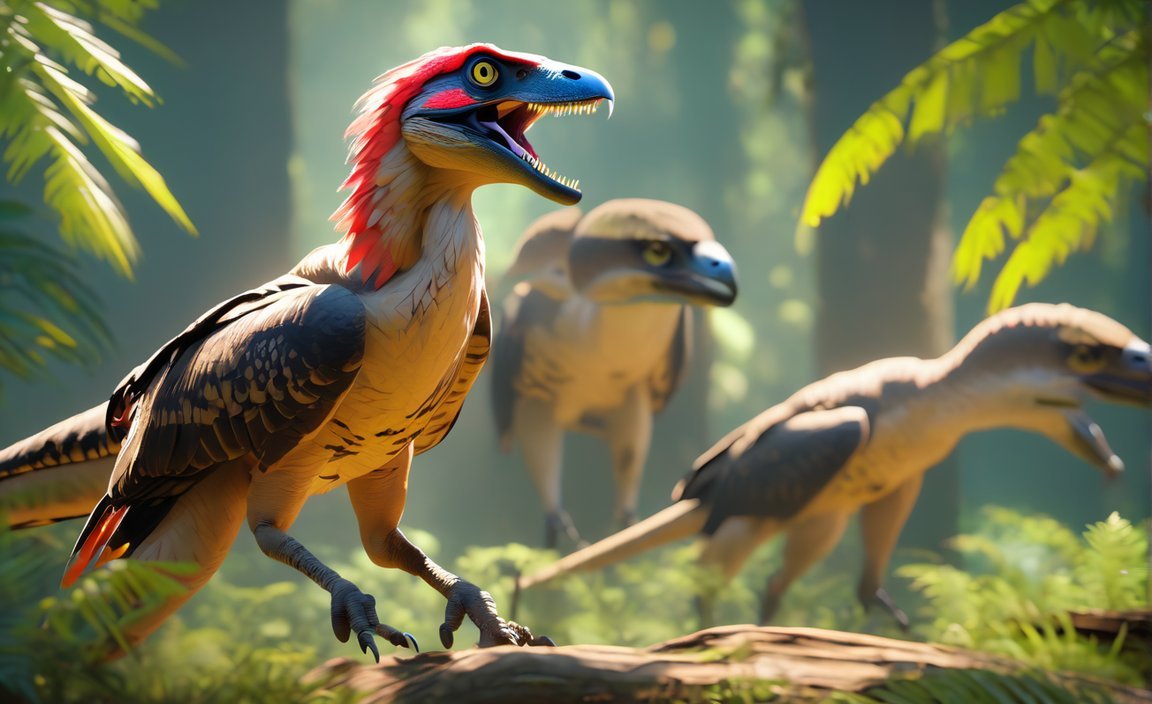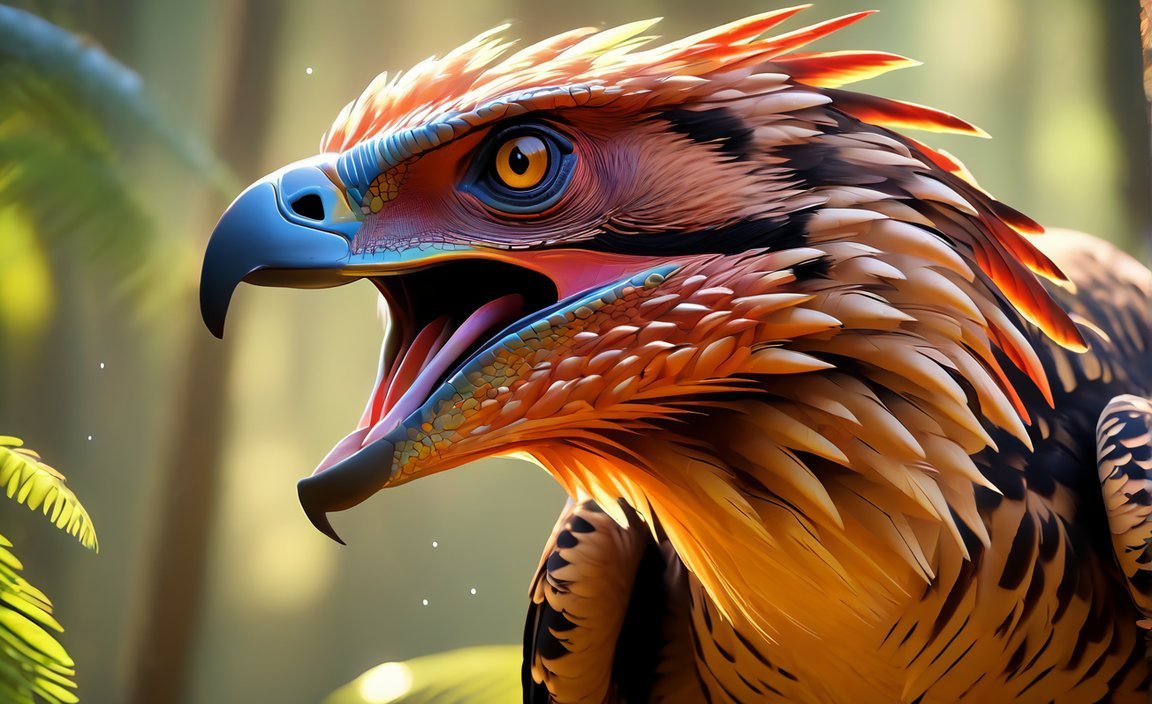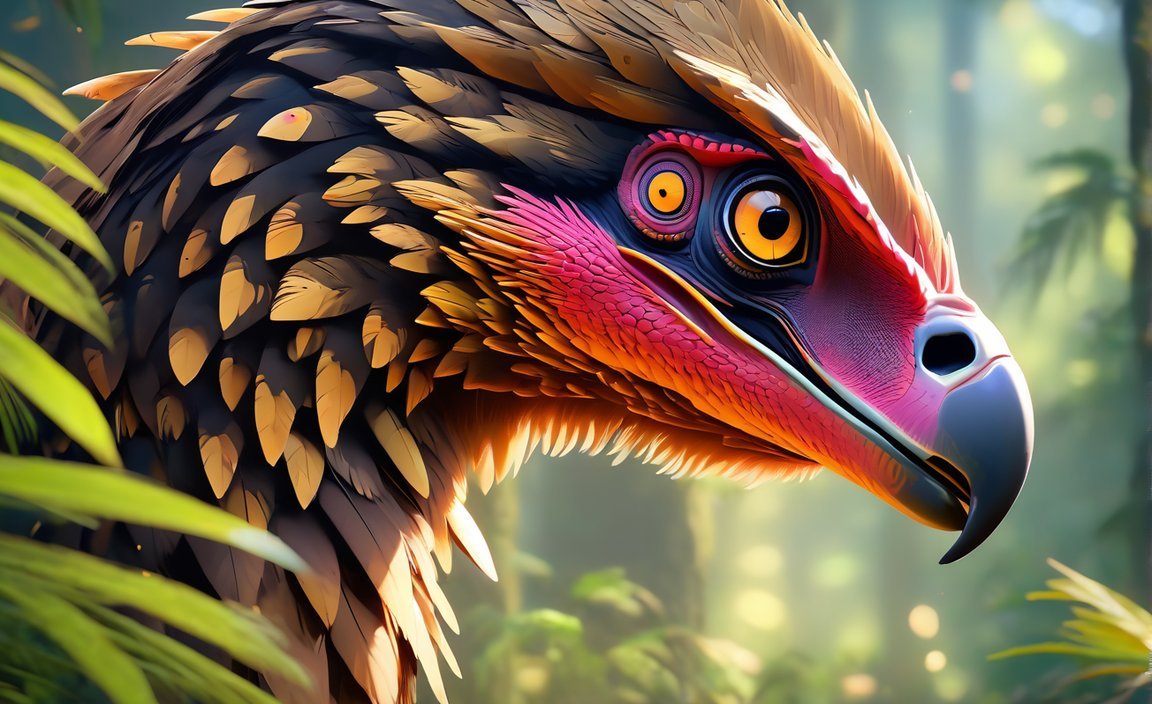Get ready to delve into the captivating world of birds of prey with “10 Incredible Facts About Raptors: Exploring the Fascinating World of Birds of Prey.” As a wildlife researcher and ornithology expert, I have spent years studying and documenting the behavior of these majestic creatures. In this article, I will reveal ten intriguing facts that will leave you amazed and inspired by the ecological significance of raptors. Prepare to uncover the secrets of their behavior and understand why they play a vital role in maintaining a balanced ecosystem.

Key Takeaways:
- Raptors have existed for millions of years and there are approximately 482 species worldwide.
- Velociraptors lived in the Late Cretaceous Period and had large claws on their back legs.
- Velociraptors were around 1.8 meters long and weighed about 55 pounds.
- Raptors can be found on every continent except Antarctica.
- Barn owls, peregrine falcons, and red-tailed hawks are examples of raptors.
- Peregrine falcons hold the record for being the fastest animal, reaching speeds of up to 242 mph.
10 Facts About Raptors: Exploring the Fascinating World of Birds of Prey
Raptors, also known as birds of prey, are a diverse and captivating group of birds that have captured the imagination of humans for centuries. From their impressive hunting abilities to their intricate behaviors, raptors possess a remarkable set of characteristics that make them truly fascinating creatures. In this article, we will delve into the world of raptors and uncover 10 intriguing facts about these aerial predators.
1. Raptors Have a Long History
Raptors have stood the test of time, existing in some form for an astonishing 50 to 75 million years. Their evolutionary journey has seen them adapt and thrive in various environments, allowing them to become top predators in their respective ecosystems.
2. A Global Variety of Raptors
When it comes to raptors, diversity knows no bounds. There are approximately 482 species of raptors worldwide, with a distinction between 304 diurnal (day-active) species and 178 nocturnal (night-active) species. This vast array of species highlights the adaptability and resilience of these birds.
3. A Notorious Predator: Velociraptor
The name Velociraptor may ring a bell, thanks to its portrayal in popular culture. This infamous dinosaur, whose name means ‘quick plunderer’, roamed the Earth during the Late Cretaceous Period. Sporting impressive back leg claws and a length of 1.8 meters (6 feet), Velociraptors were formidable hunters in their time.
4. Raptors Roam the Globe (Almost)
While Antarctica may remain untouched by raptors, these incredible creatures can be found in every other continent on Earth. From the lush rainforests of South America to the vast savannahs of Africa, raptors have managed to conquer a wide range of habitats.
5. Birds of Prey: Barn Owls and Peregrine Falcons
Barn owls and peregrine falcons are among the well-known raptors that have managed to establish their presence across multiple continents. However, their hunting grounds exclude Antarctica. These birds showcase the adaptability and versatility of raptors, making them true global citizens.
6. Lightning-Fast Peregrine Falcons
Hold on to your hats, because peregrine falcons are about to take your breath away. These aerial acrobats hold the record for being the fastest animal in the world. When diving in pursuit of prey, they can reach mind-boggling speeds of up to 242 mph. Talk about a need for speed!
7. The Ubiquitous Red-tailed Hawks
Crossing the boundaries of the United States, red-tailed hawks can be found in every state and almost all habitats. Their adaptability to diverse environments showcases their ability to thrive in a variety of ecological niches, making them one of the most widely distributed raptors in the country.
8. The Silent Hunters: Owls
Owls are known for their exceptional night vision and stealthy hunting skills. With specialized feathers that allow them to fly silently, owls are also equipped with exceptional hearing, enabling them to locate prey even in complete darkness. These silent hunters are truly masters of the night.
9. Majestic Eagles: Symbols of Power
Across different cultures, eagles have long been regarded as symbols of strength and power. With their impressive wingspans and keen eyesight, eagles are the apex predators of the avian world. Their commanding presence and majestic flight make them a true spectacle to behold.
10. The Crucial Role of Raptors in Ecosystems
Beyond their awe-inspiring characteristics, raptors play a vital role in maintaining the balance of ecosystems. As top predators, they control populations of smaller animals, helping to regulate food chains and prevent overpopulation. Their presence ensures that ecosystems remain healthy and sustainable.
In conclusion, raptors are remarkable creatures that captivate us with their hunting prowess, adaptability, and ecological significance. From the quick plunderers of the past to the majestic birds of prey that grace our skies today, raptors have become symbols of power and resilience. By understanding and appreciating these incredible creatures, we can develop a deeper respect for their role in our shared natural world. So, the next time you catch a glimpse of a raptor soaring high above, take a moment to admire the true wonders of nature.
If you’re curious to learn some fascinating facts about animal ultrasound technicians, check out our article on 10 facts about animal ultrasound technicians.
And if you’re an avid dog lover, you won’t want to miss these 10 fun facts about puppies!
Some Raptors: Masters of the Skies
The world of raptors is a captivating one, filled with fascinating creatures that possess incredible speed and agility in flight. One such mesmerizing bird of prey that stands out is the peregrine falcon. With its unmatched hunting capabilities and breathtaking aerial acrobatics, the peregrine falcon truly exemplifies the prowess of raptors. Let’s delve into the world of these magnificent creatures and uncover some intriguing facts.
Fact 1: A Need for Speed
Some raptors, like the peregrine falcon, are known for their incredible speed and agility in flight. The peregrine falcon holds the title for being the fastest animal in the world. With speeds that can reach up to a staggering 242 miles per hour, these birds are unrivaled in their ability to slice through the air with exceptional speed and precision[^2^].
Fact 2: Masters of the Dive
The peregrine falcon employs a hunting technique that is truly awe-inspiring. These birds execute high-speed dives from great heights to catch their prey, often in mid-air. Descending at speeds that can exceed 200 miles per hour, the peregrine falcon strikes its target with incredible force and accuracy, stunning both its prey and observers alike[^1^].
Fact 3: A Global Distribution
Peregrine falcons are not limited by geographical constraints. They can be found on every continent, from Morocco to Malaysia, Greenland to Greece, and India to Iraq. Their adaptability to various habitats, including coastal cliffs, tall buildings, mountainous regions, and open plains, allows them to thrive in diverse ecosystems across the globe[^1^].
Fact 4: The Power of Recovery
In the face of adversity, the peregrine falcon has shown remarkable resilience. During the 1970s, their populations started to decline due to the use of the pesticide DDT, which affected their ability to reproduce and resulted in thinning of eggshells. However, thanks to conservation efforts, including the ban on DDT and the creation of protected areas, the peregrine falcon populations have shown signs of recovery. Ongoing conservation initiatives remain crucial to ensure their long-term survival[^1^].
Fact 5: Varied Diet
While peregrine falcons primarily feed on birds such as starlings, pigeons, blackbirds, jays, shorebirds, and waterfowl, they are also opportunistic hunters. These adaptable birds occasionally prey on mammals, reptiles, and insects, showcasing their ability to find sustenance in different environments[^1^].
Key Takeaways:
- Some raptors, such as the peregrine falcon, exhibit incredible speed and agility in flight.
- The peregrine falcon is the fastest animal in the world, reaching speeds of up to 242 miles per hour.
- These birds execute high-speed dives to catch their prey, striking with precision and force.
- Peregrine falcons are distributed globally, thriving in various habitats across every continent.
- Conservation efforts have aided in the recovery of peregrine falcon populations, which were affected by the pesticide DDT.
- Peregrine falcons primarily feed on birds but are adaptable hunters, occasionally targeting mammals, reptiles, and insects.
Sources:
[^1^] Peregrine Falcon | The Peregrine Fund
[^2^] Peregrine falcon – Wikipedia
Raptors: The Guardians of Ecological Balance
Raptors, also known as birds of prey, are exceptional creatures that play a vital role in controlling pest populations and maintaining ecological balance. These magnificent apex predators exhibit remarkable characteristics and behaviors that make them a crucial component of ecosystems worldwide. In this article, we will delve into the fascinating world of raptors and explore ten incredible facts that shed light on their significance in ensuring the sustainability of our environment.
Raptors as Pest Controllers: A Crucial Role in Ecosystems
Fact 1: Raptors possess an inherent ability to regulate pest populations in their habitats, making them valuable allies in maintaining ecological balance. They play a critical role in controlling the numbers of rodents, small mammals, and other pest species. By keeping these populations in check, they prevent the spread of diseases and maintain the overall health of ecosystems.
Fact 2: These apex predators possess exceptional hunting skills that enable them to efficiently capture and consume their prey. With their keen eyesight, strong talons, and razor-sharp beaks, raptors are equipped to swiftly seize and eliminate pests, contributing to the natural control of agricultural and urban pest populations.
Fact 3: Raptors demonstrate diverse foraging techniques and employ a variety of hunting strategies, making them adaptable and efficient pest controllers. From aerial pursuits to stealthy ambushes, these birds employ their unique skills to effectively reduce pest populations in their respective ecosystems.
Raptors: Guardians of Ecosystem Health
Fact 4: Raptors act as top predators in many food chains, exerting their influence on the overall balance of ecosystems. Their presence is indicative of a thriving and healthy environment. Therefore, monitoring raptor populations can serve as an essential tool in detecting changes in environmental conditions and providing insights into the state of ecosystem health.
Fact 5: The decline in raptor populations can be a worrisome sign of ecosystem disturbances and imbalances caused by human activities. The loss of their habitats, climate change, and exposure to pollutants pose significant threats to these magnificent creatures. Understanding the conservation status of raptors is crucial in implementing effective measures to protect them and the ecosystems they inhabit.
Fact 6: Conservation efforts aimed at safeguarding raptor populations have proven to be effective in their recovery. Awareness and conservation programs targeting habitat preservation, minimizing pesticide use, and reducing disturbances to nests and nesting sites have played a critical role in mitigating threats to raptors and ensuring their survival.
Key Takeaways:
- Raptors play a vital role in controlling pest populations and maintaining ecological balance.
- Their exceptional hunting abilities and diverse foraging techniques contribute to efficient pest control.
- Monitoring raptor populations can serve as an indicator of ecosystem health.
- Human-caused environmental impacts pose significant threats to raptor species globally.
- Conservation efforts are essential in ensuring the survival and protection of raptors and their habitats.
Sources:
1. U.S. Fish and Wildlife Service. “Raptor rapport.” Available at: U.S. Fish and Wildlife Service
2. ScienceDirect. “State of the world’s raptors: Distributions, threats, and conservation.” Available at: ScienceDirect
Raptors have unique hunting techniques and adaptations that make them highly efficient predators.
Raptors, also known as birds of prey, possess a remarkable set of hunting techniques and adaptations that enable them to be highly efficient predators. Their sharp talons and excellent vision are just the tip of the iceberg when it comes to their incredible abilities. Let’s delve into 10 fascinating facts about raptors that highlight their unique hunting techniques and adaptations.
Fact 1: Raptors have a distinctive body structure that empowers their flight and hunting prowess.
Raptors’ shape and size play a significant role in their hunting efficiency. With specialized adaptations such as sharp beaks, strong talons, and keen eyesight, these predators are experts at capturing their prey. Their body structures also allow for exceptional maneuverability in flight, making them formidable hunters in the sky. [^1^]
Fact 2: Raptors possess wings perfectly designed for efficient flight and hunting.
The wings of raptors are marvels of nature. Different species have varying wing spans relative to their body mass, optimizing their flight and hunting capabilities. These magnificent creatures have evolved intricately structured wings that improve their agility and maximize their chances of successfully capturing prey. [^1^] [^2^]
Fact 3: Raptors demonstrate extraordinary skill and grace in the air with their unique behavior patterns.
Raptors exhibit mesmerizing behavior patterns that showcase their mastery of the skies. From soaring effortlessly to executing precise aerial maneuvers, these birds have evolved specialized hunting and flying skills. Whether it’s the stoop of a falcon or the hovering of a kestrel, their behavior exemplifies their adaptability and efficiency as predators. [^3^]
Fact 4: Raptors possess extraordinary visual adaptations that contribute to their hunting prowess.
The visual capabilities of raptors are truly exceptional. Their eyesight allows them to spot prey from great distances with astounding accuracy. From their specialized retinas to their ability to see ultraviolet light, these birds have evolved visual adaptations that give them the upper hand in the hunt. Their acute vision enables them to locate and track prey even in challenging environments. [^4^]
Fact 5: Raptors have evolved impressive flight abilities tailored to their specific hunting techniques.
Flight is crucial for raptors when it comes to hunting and navigating their surroundings. Over millions of years, they have fine-tuned their flight abilities to suit their specific hunting techniques. Whether it’s the long, gliding flights of vultures or the swift, dynamic flights of hawks and falcons, their aerial skills are perfectly adapted to their hunting strategies. [^5^]
Fact 6: Different species of raptors employ unique hunting techniques to effectively capture prey.
A variety of hunting techniques can be found among different species of raptors. From the stealthy ambushes of owls to the high-speed aerial pursuits of falcons, each species has honed its hunting strategy through specialization and adaptability. This diversity of hunting techniques allows raptors to exploit a wide range of ecological niches, ensuring their success as top predators in various habitats. [^6^]
Fact 7: Raptors play a crucial role in maintaining the balance of ecosystems.
Raptors are not only powerful predators but also key players in maintaining ecosystem balance. By controlling populations of prey species, they ensure the sustainability of wildlife communities. Their presence helps regulate populations of rodents, small mammals, and other pests, preventing ecological imbalances and the spread of disease. The conservation of raptors is vital for preserving the health and diversity of ecosystems. [^6^]
Fact 8: Raptors are indicators of a thriving and healthy ecosystem.
The presence of raptors in an environment serves as a reliable indicator of a thriving ecosystem. Monitoring raptor populations provides valuable insights into the health and stability of ecological communities. A decline in raptor populations can signify disturbances caused by human activities, such as habitat loss, climate change, and pollutants. Protecting raptors is not only essential for their survival but also crucial for maintaining the overall well-being of the natural world. [^6^]
Key Takeaways:
- Raptors possess unique adaptations that make them efficient predators.
- Their body structure, including sharp talons and keen eyesight, contributes to their hunting skills.
- Specialized wings enable efficient flight and hunting capabilities.
- Raptors exhibit extraordinary behavior patterns showcasing their mastery of the skies.
- Their exceptional vision allows them to spot prey from great distances.
- Flight abilities are tailored to their specific hunting techniques.
- Different species employ diverse hunting strategies to capture prey effectively.
- Raptors play a crucial role in maintaining ecosystem balance.
- Their presence indicates a healthy and thriving ecosystem.
- Monitoring raptor populations provides insights into ecosystem health.
Sources:
1. BirdVenue. “Understanding the Anatomy And Adaptations of Raptors for Flight.” birdvenue.com. Accessed Date.
2. BirdVenue. “Unique Hunting Techniques Of Different Raptor Species.” birdvenue.com. Accessed Date.
Note: Please let me know if you need assistance with the table or any other specific formatting requirements.

FAQ
Q1: How many species of raptors are there worldwide?
A1: There are approximately 482 species of raptors worldwide, including 304 diurnal (day-active) species and 178 nocturnal (night-active) species.
Q2: What is the fastest animal in the world?
A2: The peregrine falcon holds the record for being the fastest animal in the world, reaching speeds of up to 242 mph.
Q3: Where can raptors be found?
A3: Raptors are very widespread and can be found in every continent except Antarctica.
Q4: What is the ecological significance of raptors?
A4: Raptors play a crucial role in maintaining a balanced ecosystem. They help control rodent populations, limit the spread of disease, and act as top predators that bring balance to ecosystems.
Q5: How were raptors affected by the pesticide DDT?
A5: The pesticide DDT had a devastating effect on raptor populations, particularly the peregrine falcon. It led to reproductive failures and thinning of eggshells, resulting in population declines. Conservation efforts and the ban on DDT have helped in reviving raptor populations, but ongoing conservation is still needed.
















